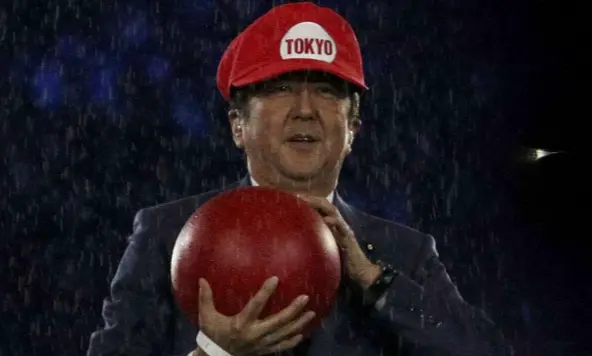Japanese Prime Minister Shinzo Abe’s cameo appearance as video game icon Super Mario at the closing of this year’s Olympiad in Rio helped promote the 2020 games in Tokyo, but cannot disguise the fact that some think it may be game over for Japan’s current combination of fiscal and monetary policy settings, known as Abenomics.
David Stockman, US President Ronald Reagan’s director of the Office of Management and Budget, has been scathing about Bank of Japan’s (BOJ) monetary policies, last week describing BOJ Governor Haruhiko Kuroda “as the most foolish central banker of all time”.
Stockman believes Japan is marching “resolutely toward its destiny as the world’s first bankrupt old age colony”, waspishly comparing the BOJ’s purchases of Japanese government bonds, part of its policy of quantitative and qualitative easing, to an insect trap that allows cockroaches to enter but not to exit.
“The BOJ is the ultimate roach motel,” Stockman wrote. “At length, virtually every scrap of Japan’s gargantuan public debt will go marching into its vaults never to return, and at ‘whatever it takes’ in terms of bond prices to meet the BOJ’s lunatic quotas.”
While Stockman’s caustic tone will grate with many, there is no doubt that, despite its best efforts, the BOJ’s attempts to hit its 2 per cent target for inflation remain a work in progress.
“One of the key elements of our policy is to push up inflation expectations to our price stability target and anchor them there,” Kuroda re-iterated on Saturday, speaking at the US Federal Reserve-hosted central banks symposium in Jackson Hole, Wyoming.
Kuroda will have been painfully aware that data released Friday showed Japan’s consumer prices fell in July with the nationwide core consumer price index dropping 0.5 per cent year-on-year, declining for the fifth month in succession.
“There is no doubt that there is ample space for additional easing in each of the three dimensions,” the BOJ Governor said on Saturday, in reference to the Japanese central bank’s asset buying, its monetary-base guidance, and its use of negative interest rates.
If needed, the Bank of Japan will “take additional monetary policy measures without hesitation”. Kuroda added though that a move to even more negative interest rates in Japan will surely not go down well with Japanese banks.
Japan’s Financial Services Agency already estimates that the current level of negative interest rates will hit profits for the country’s three biggest banks by at least 300 billion yen (US$2.96 billion) for the year through March 2017, reported the Nikkei business daily on August 13.
On top of that, Japan’s banks are already wrestling with regulatory change applicable to US money-market funds which has driven up Japanese banks’ dollar funding costs at a time when the Fed may again be looking more closely at raising US rates anyway.
Indeed, the US bank BNYMellon recently argued that “the source of Abenomic’s salvation” and “Shinzo Abe’s best hope may lie with the resumption of the Fed’s normalisation process and the possibility of a sustained rise in USD/JPY”.
If Abe’s best bet is a helping hand from the Fed, that hardly reflects confidence in the effectiveness of Abenomics and its blend of fiscal and monetary policies and structural reform.
Regarding fiscal policy, the Abe government launched a 28.1 trillion yen stimulus package at the start of August, of which 4.6 trillion yen is actual new government spending which will fall in this Japanese financial year ending March 31, 2017.
Yet a Reuters corporate survey, conducted over the period August 1-16, showed less than 5 per cent of the Japanese companies polled felt the fiscal package would help Japan’s economy in the near-term or raise its capacity for growth.
Nobel prize-winning economist Paul Krugman might well agree with that sentiment given his own view of Abenomics that “there were supposed to be three arrows – monetary policy, fiscal expansion, and, yes, structural reform. But really only the monetary arrow was fired”.
None of this precludes Japanese policymakers from doubling down again on Abenomics. As Abe advisor Etsuro Honda said recently of quantitative easing “what we should say is, ‘effects are diminishing, so let’s do more.’ This is the spirit of Abenomics”.
But that wouldn’t necessarily overcome the problem, as succinctly put by BNYMellon on August 24 that “investors and the populace alike have lost faith in Abenomics and by extension, Japan’s remaining options”.
If Japan’s policymakers cannot restore investor and popular faith in the efficacy of Abenomics not even Super Mario will be able to stop the “Game Over” sign appearing.
(SOUTH CHINA MORNING POST)
 简体中文
简体中文

